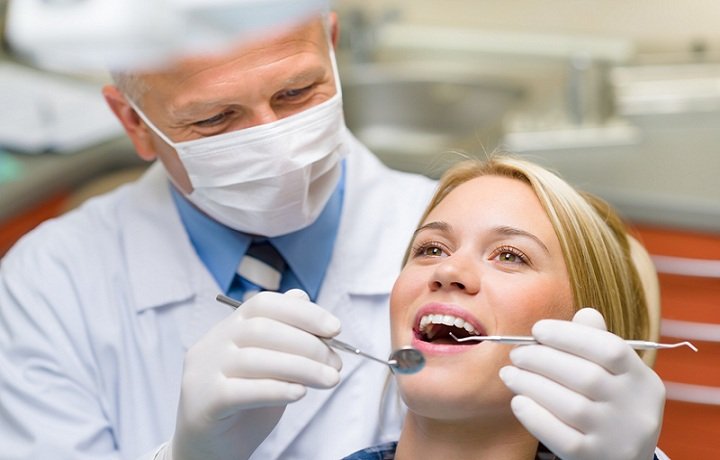The dentists got it right – an ounce of prevention is worth a pound of cure. Dentists don’t sit back and wait until a patient needs a root canal before they take action. Instead, they continually monitor, preventatively treat, and educate their patients on ways to take care of their teeth. What would happen if we took the same approach to care for our spines and backs? It’s surprising more people don’t pose this question, considering how important our backs and spines are to our overall health! The truth is, if more people treated their back like they did their teeth, they’d feel a lot better and be a whole lot healthier.
Table of Contents
Setting the stage for preventative care
Americans have some of the best oral health in the world – and this didn’t happen overnight or by chance. The American Dental Association is unified in its beliefs and standards of care for a patient’s teeth at any age. Because of this unity, a strong message is conveyed: See your dentist for regular check-ups so you don’t have to see him for something serious! Regular checkups are done that include x-rays to make sure cavities aren’t developing, dental cleanings to make sure that there is not too much tartar buildup, and assessments to make sure that a patient’s mouth and teeth are looking generally straight and healthy. Numerous products and regimens were woven into our society’s beliefs until they became the norm. In fact, dental care is so well ingrained in our day-to-day life that most of us floss and brush at least twice a day. At-home dental care combined with regular in-office checkups and preventative treatments is an example of an ideal system of prevention.

A strong foundation
People of all ages go to the dentist, floss, and brush. Teeth’s importance doesn’t diminish as we age — we should always take care of them. Just like our teeth affect our jaws, skulls, sinuses, nutrition, and even our hearts, our backs and spines are related to so much more than our posture or backaches. The back and spine not only help to keep the body in an upright position, but they also protect the nervous system. The nervous system includes the brain and spinal cord, controlling every single action in the entire body – from breathing to walking. Exiting from the spinal cord and spine is an intricate web of nerves that feed into all of the muscles and organs. Interference with these nerves can lead to a myriad of symptoms, not limited to the classic “back pain“.
By utilizing the dental approach in regards to the spine and back, people would get regular spine and back check-ups by a chiropractor, physical therapist, or orthopedist. These professionals would evaluate the functional level of the spine through a thorough check-up and then provide preventative treatments. In addition, instructions for at-home stretches and exercises would be provided, ensuring that in just minutes a day a patient could prevent or minimize back and spine troubles.
Take a lesson from orthodontists
An orthodontist is a highly regarded dental specialist designed to treat misaligned teeth by looking at the teeth and jaw in a very dynamic manner and often utilizing dental braces to bring alignment back to the teeth. It is quite important to have straight, properly functioning teeth for many health reasons, in addition to cosmetic purposes. Most orthodontist’s work is not covered by insurance, though patients pay out of pocket because the importance of straight teeth has been ingrained in each of us from a young age.
Perhaps we need a specialty more along the lines of spinal orthodontics! We tend to deal with a crooked spine (scoliosis) much differently than the common sense dental model. Treatment for scoliosis is typically no treatment at all. Usually, x-rays are taken to measure the degree of crookedness. If the crookedness is not so severe than surgery isn’t needed, no treatment is offered. This is not to say that treatments for scoliosis aren’t available or effective. Exercise, guided stretching, chiropractic treatments, and physical therapy can all help to prevent or reverse scoliosis! However, no consensus currently exists for treating scoliosis let alone guidelines for what profession should primarily treat it.
The first step: Get away from the cliff
Though back and spine care are not near the preventative level that dental care is at, a good first step is avoiding the proverbial back pain cliff through regular check-ups with a chiropractor St George. Teetering on the edge of this cliff means one simple stress on your body can push you into the abyss of back pain. Regular check-ups create a larger space between your body and the edge of that dangerous cliff. It is the little things, like daily stretching and exercise, that make your body most resilient and prevent small issues from turning into big catastrophes.
The second step: No excuses
Your broken teeth can be replaced or mended. Unfortunately, dentures for the spine just aren’t an option and artificial discs and vertebrae don’t work very well and create many complications. Take good care of your spine. And no, getting older is not a legitimate reason to lose back function or become less active. No matter what your age, activity level, flexibility, etc. There are gentle movements and stretches that you can do to prevent injury and for reducing pain.
The final word
If you’ve ever had back pain, as most people have, you’ll surely understand the appeal of prevention rather than treatment. Our spines should be regularly monitored and preventatively treated just like our teeth. At-home routines, the spinal equivalent to brushing and flossing, must become everyday habits for everyone.




